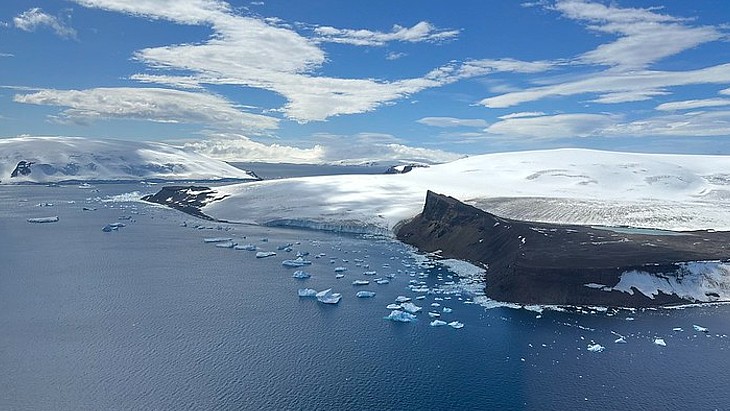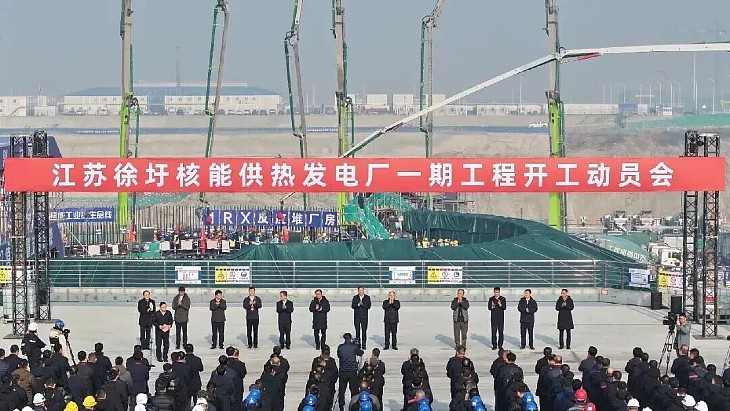The agreement came during a visit to the country by IAEA Director General Rafael Mariano Grossi and was signed by Chile's Foreign Minister Alberto van Klaveren - in a post on X Grossi said they would "study microplastic pollution in Antarctica, aiming to trace origins and impacts to develop strategies against it".
Grossi also signed an agreement with Chilean Nuclear Energy Commission on nuclear technology and lithium "aimed at harnessing nuclear technology to enhance lithium mining".
NUTEC Plastics
The IAEA's scheme was established in 2020 and uses a series of monitoring laboratories to use nuclear technology to sample and analyse microplastics - which are bits of plastic less than 5 millimetres in diameter - in the environment. There are more than 60 countries participating in monitoring of microplastics in the sea, and the goal is to equip more than 50 laboratories with the technology to form a global monitoring network.
The aim is to then be able to take action to bring in measures designed to reduce the sources of the pollution - at least 30 countries are involved in developing innovative recycling technology, including using irradiation to treat plastics and make them fit for reuse, or for a wider range of reuses. This process uses gamma and electron beam radiation technologies to modify certain types of plastic waste, breaking down plastic polymers judged not to be of sufficient quality into smaller components and then allowing them to be used to generate new plastic products.
The IAEA cites studies suggesting that only around 10% of plastic produced between 1950 and 2015 has been recycled, with the majority (about 60%) going to landfill, meaning action is imperative given estimates that there will be one tonne of plastic for every three tonnes of fish within a few years.
Antarctica
Grossi visited an IAEA mission in Antarctica in January with Argentina's president to see the start of work there assessing the impact and scale of plastic pollution. The two-person IAEA research team spent a month assessing "the impact of microplastics by investigating its occurrence and distribution in seawater, lakes, sediments, sand, discharge water and animals of the Antarctic ecosystem near the Argentine Carlini scientific research station".
The IAEA said at the launch of its mission, "there is still almost no information available on where and how much microplastics arrive in the Antarctic and how much is taken up by Antarctic organisms. There is also very little data existing on the types of microplastics reaching this pristine area through ocean currents, atmospheric deposition and the presence of humans in the Antarctic".
It also said the "presence of microplastics can contribute to accelerating the ice-loss in Antarctica by reducing ice reflectivity, altering surface roughness, promoting microbial activity, acting as thermal insulators, and contributing to mechanical weakening of the ice structure".
Other agreements
The IAEA director general and the Chilean Nuclear Energy Commission's Luis Huerta signed an agreement aimed at using nuclear technology to enhance the mining of lithium, which has applications in a range of energy sectors, including fusion and "paves the way for wider regional support from the IAEA".
There were also discussions with Chile's health minister about expanding cancer care via the IAEA's Rays of Hope: Cancer Care for All initiative.
Grossi said: "Nuclear science boosts Chile’s development in areas like health, food, security and environment. I look forward to furthering our collaboration."
Chile and nuclear
Chile does not have nuclear power, although there have been discussions about a nuclear energy programme being developed. The Chilean Nuclear Energy Commission has operated the RECH-1 research reactor since 1974. This reactor is located at La Reina Nuclear Centre in Santiago. It is a 5MW pool-type reactor using low-enriched uranium fuel assemblies, light water as moderator and coolant, and beryllium as reflector. The main use of the RECH-1 reactor is the production of radioisotopes, mainly for medicine. In addition, irradiation of samples is carried out for chemical analysis and geological material, for purposes of determining age and preparing radioactive tracers.






_28178.jpg)
_66891.jpg)
_16128_62584.jpg)





